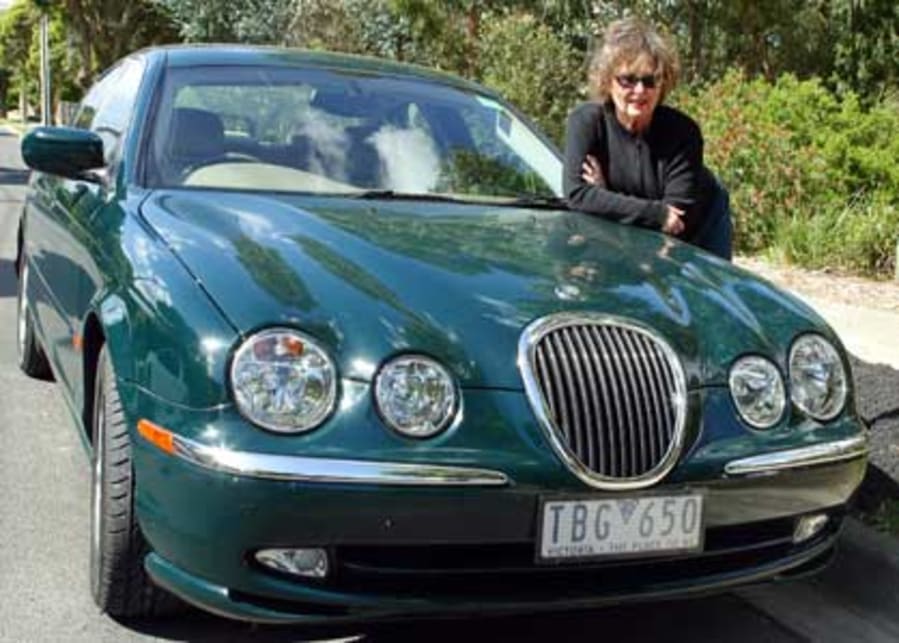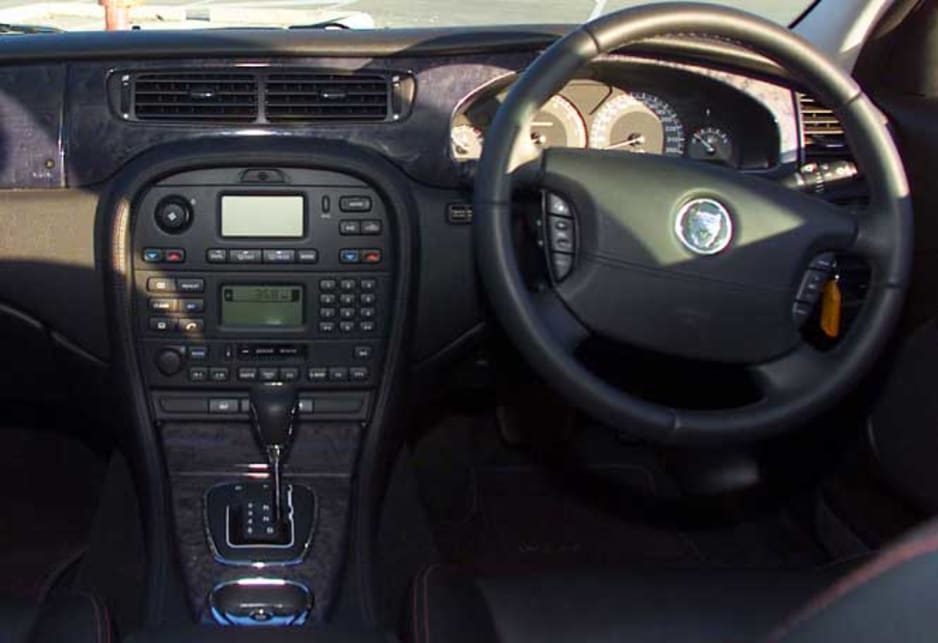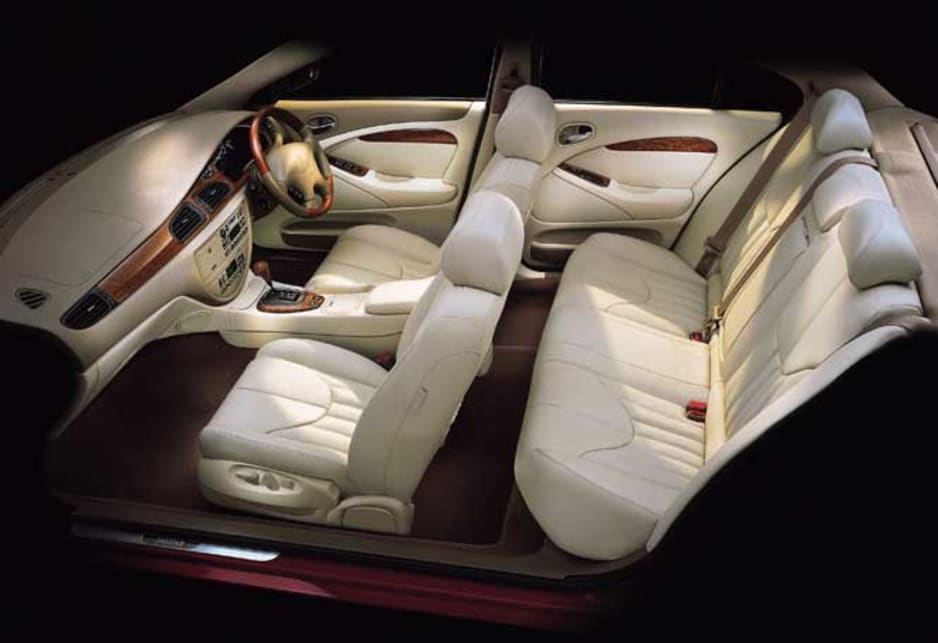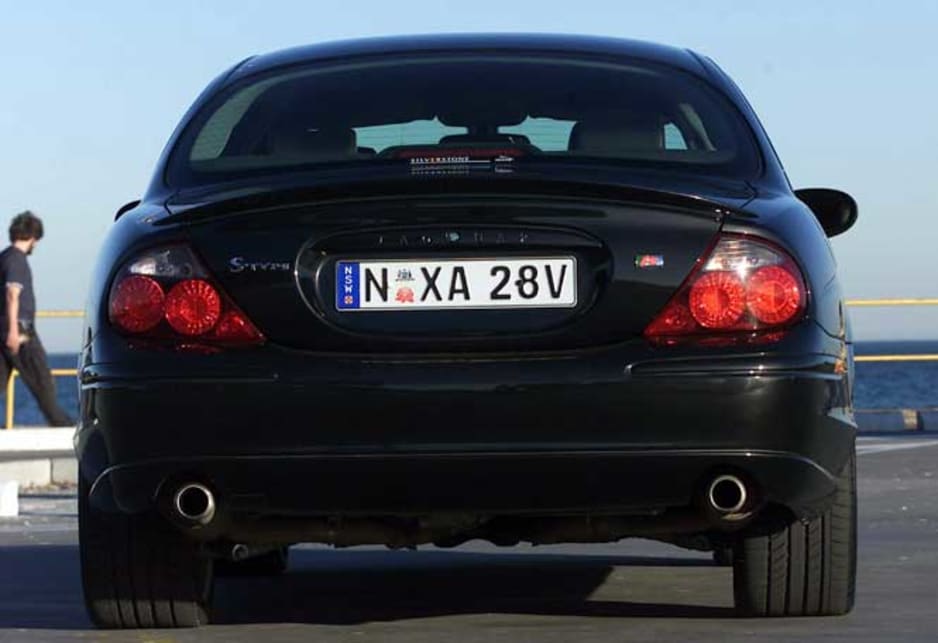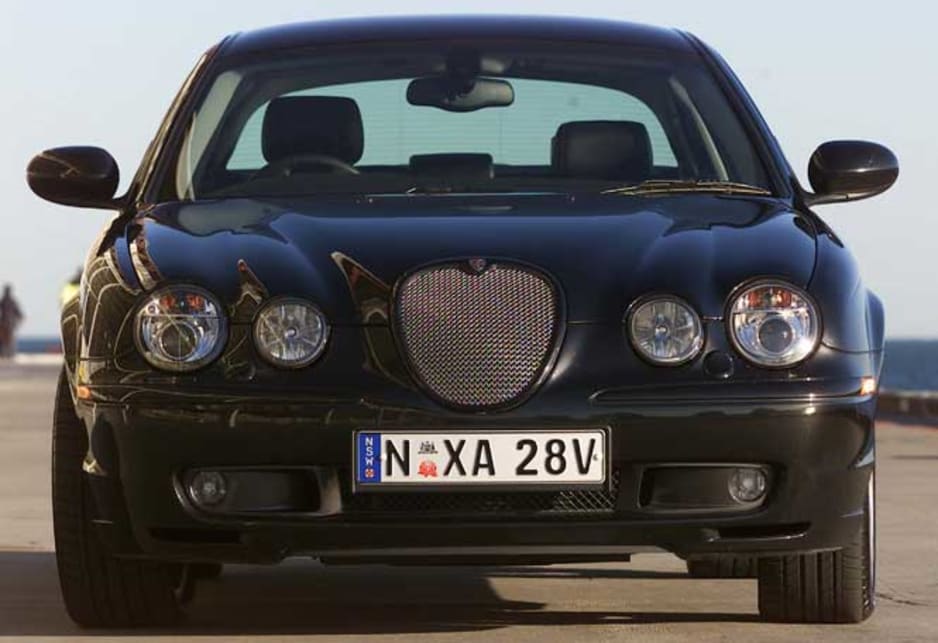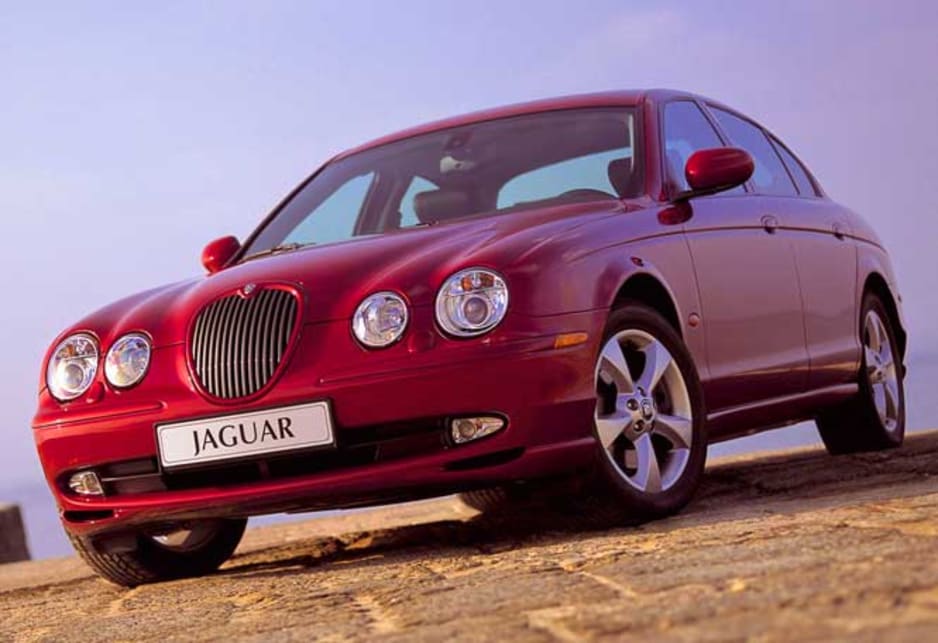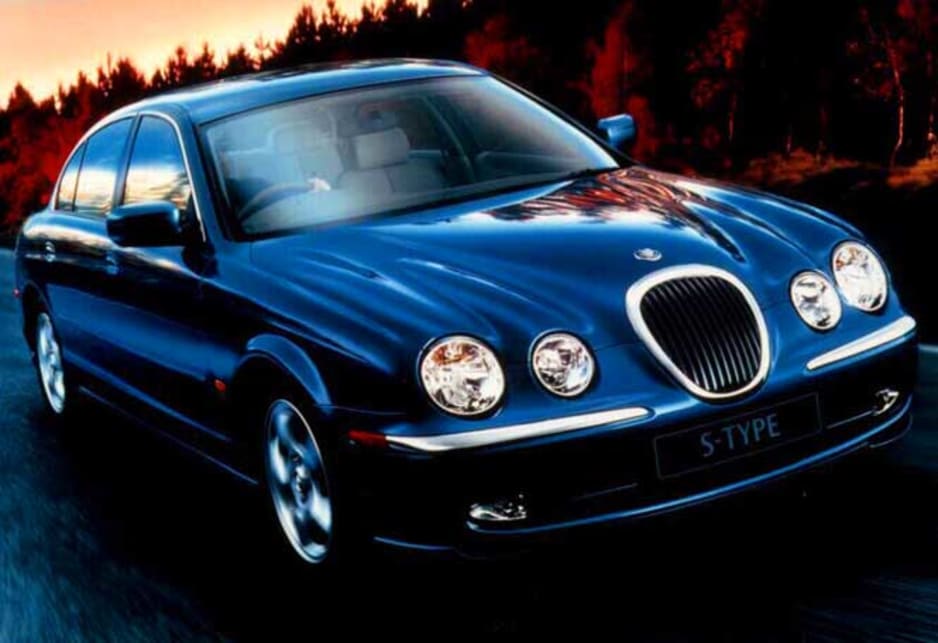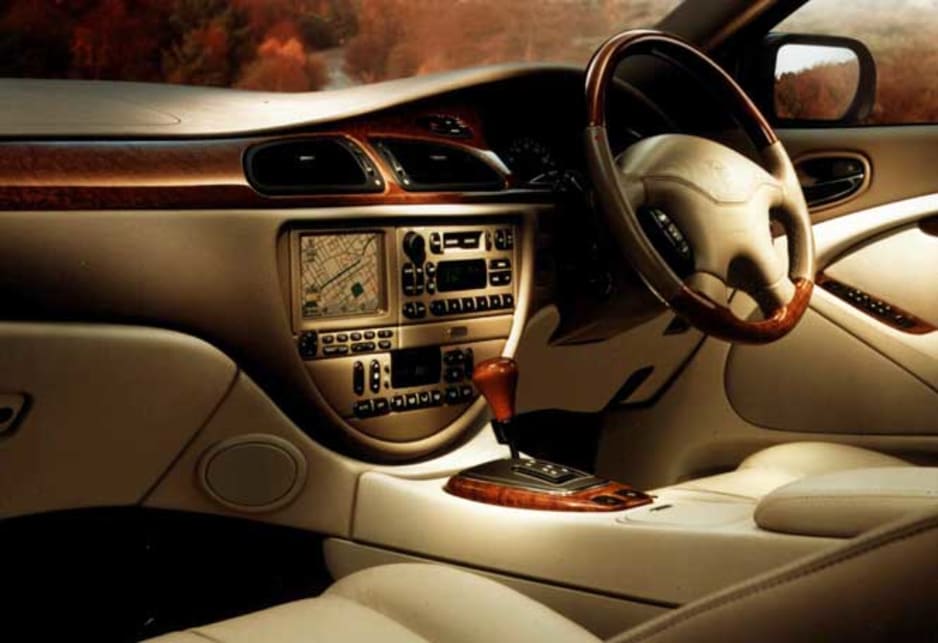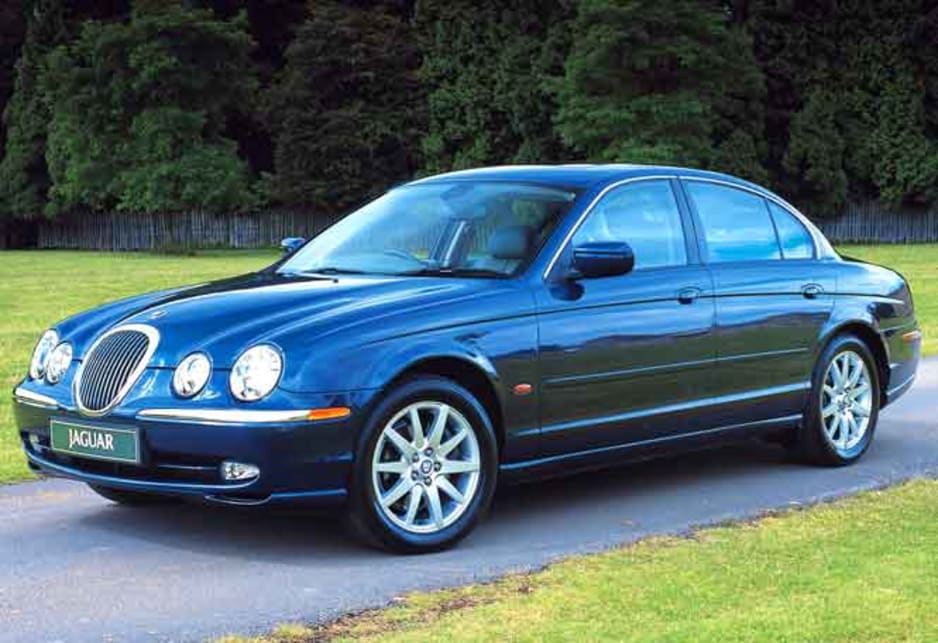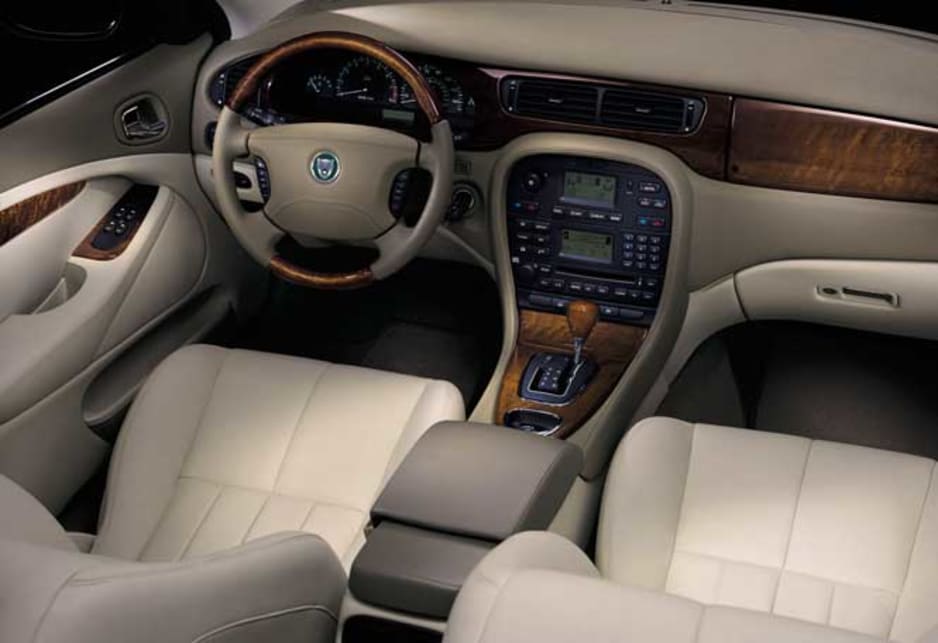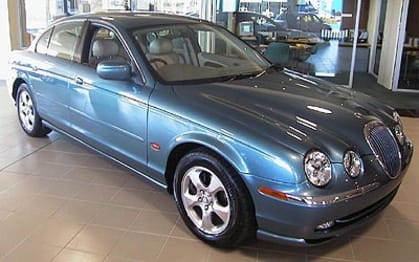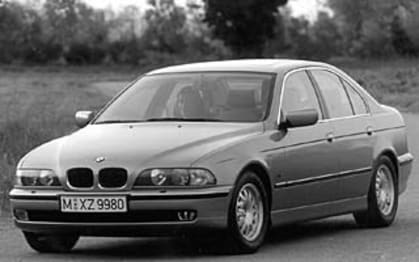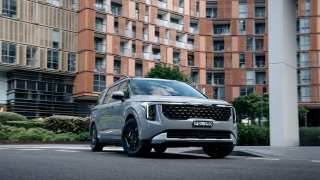
Used Jaguar S Type review: 1999-2002
- Jaguar S Type
- Jaguar S Type 1999
- Jaguar S Type 2000
- Jaguar S Type 2001
- Jaguar S Type 2002
- Jaguar S Type Reviews
- Jaguar Reviews
- Jaguar Sedan Range
- Sedan
- Jaguar
- Used Car Reviews
- Prestige & Luxury Cars
- Buying tips
There’s always a risk when revisiting the past that you won’t be able to recreate what you once adored. When it comes to cars the risk is even greater, and when you’re Jaguar and you’re trying to evoke memories of a great 1960s classic the risk is beyond imagination.
That was the way it was when Jaguar launched the S-Type in 1999 with much ado about the great Mark II that helped forge Jaguar’s great sporting tradition in the 1960s.
The Mark II is one of the great Jaguars. It was the model that really transported the company from a maker of great sports cars to one capable of going beyond the mould and making great sedans.
With Jaguar’s lusty double overhead camshaft six-cylinder engine purring under its sleek bonnet, a racy four-speed manual gearbox, independent suspension and disc brakes, the Mark II stood head and shoulders above the ’60s crowd.
The S-Type had a much tougher task to shine against great cars from Europe and Japan. It wasn’t possible for the S-Type to stand out like its legendary predecessor, and yet by recalling the Mark II Jaguar created an expectation that it would.
Its reception was luke warm, particularly when compared to great cars like BMW’s 5-Series or Benz’s E-Class, and there were lots of scribes ready to put it down if it showed even the most minor weakness.
A major part of the problem was the decline of the British motor industry since the great days of the 1950s and ‘60s when it was a world leader in automotive technology. By the 1990s it was a mere shadow of its former self, barely existing, and Jaguar was by then owned by Ford.
With all of that baggage the S-Type faced an uphill battle to convince the sceptics it was worthy of considering alongside the new prestige heavyweights.
MODEL WATCH
The S-Type was clearly an attempt to snare more of the prestige market than Jaguar then had with the bigger XJ sedan. It was designed to compete with the likes of the BMW 5-Series and Mercedes-Benz E-Class in the compact prestige segment.
Its styling recalled the Mark II and the later S-Type of the 1960s. It was classic Jaguar from tip to toe with an athletic profile that flowed smoothly from its retro grille to its truncated rump.
The headlamps, and adjacent driving lamps, screamed Mark II, the only thing missing was the famous ‘leaper’ bonnet mascot.
If there was a criticism it was that the styling made the S-Type appear heavy. The large panels, and the relatively small glass area combined to make it look heavy when compared to the likes of its BMW and Benz rivals.
Inside, it felt a little claustrophobic and sombre. The dash, with an appropriate dash of woodgrain, was tall and bluff, which made the Jaguar’s cockpit feel confined.
Leather was used on the seats, which were supportive and comfortable, there were all the appropriate features like air-conditioning, CD sound, cruise along with a full array of instruments.
It looked the part, but the real test for the S-Type was in the driving experience. While it was nice to think it might be a reincarnation of the old timer, the modern S-Type had to be a very competent road car to hold its own with the other great cars that were then in the market.
Power was provided by a choice of V6 or V8 engines. The V6 was a double overhead camshaft 3.0-litre unit pumping out 179 kW at 6800 revs and 300 Nm at 4100 revs.
The alternative V8 was a smooth and zesty 4.0-litre double overhead cam unit with 209 kW at 6100 revs and 380 Nm at 4100 revs.
Jaguar offered a choice of transmissions. There was a five-speed auto available with both the V6 and V8 and this featured Jaguar’s unique, but rather clunky ‘J-gate’ shift that was basically a second gate that ran parallel with the main shift gate and allowed you to shift manually.
While the shift was reasonably effective, it really couldn’t compare with the simpler and more efficient manual shift functions offered by its rivals.
There was also a five-speed manual gearbox, but that was only offered on the Sport models.
Like all great sporting cars the S-Type drive was directed to the rear wheels.
The suspension was independent front and rear, and the handling was nicely balanced and secure when pressed on a challenging road.
It’s times like that you also appreciate the presence of four-wheel disc brakes should your exuberance outstrip your ability. Of course the addition of ABS added to the S-Type’s dynamic safety.
As a prestige car should the S-Type was packed with plenty of features. Apart from the air-conditioning and sound system already mentioned the V6 came standard with alarm, immobiliser, adjustable steering column, power windows and mirrors, and trip computer.
Step up to the V6 SE and you also got power steering adjustment, sunroof, sports steering wheel, power seats with memory, and front fog lamps.
Take another step up to the Sport V6 and you lost the SE’s sunroof, but you got adjustable shocks for a sportier driving experience.
IN THE SHOP
Early cars had troubles with the power steering hoses blowing, but this was supposedly fixed soon after the S-Type was launched here. V8s were more prone to the problem than was the V6.
Jaguars tend to be bought by Jaguar enthusiasts who are prepared to look after them and have them serviced according to factory recommendations. Still, it’s important to check the service record to confirm a caring owner as some cars are bought purely for the prestige and are moved on before problems develop.
Check carefully for the telltale signs of crash damage, from ill-fitting panels, variable door gaps, mismatching paint.
IN A CRASH
With dual airbags and side impact bags the S-Type has a full array of crash protection systems and you would expect them to perform well in a crash.
The S-Type is too new to feature in the recent used car safety survey, too few were on the road, and involved in crashes, but they should be good in a crash.
OWNERS SAY
Anne Tootell always admired the classic Jags of the 1960s, the Mark I and II saloons and the E-Type sports car, but wasn’t a fan of the XJ6, so she was a natural candidate for the S-Type when it was launched. She owns a 1999 3.0-litre V6 and loves the ease of driving, dual climate control air-conditioning and exceptional economy when touring on the open road (less than 10 L/100 km). Her only criticism is that the BRG paintwork demands constant attention.
LOOK FOR
• retro styling evoking memories of past greats
• Confined interior a little claustrophobic
• Ford fittings a let down
• powerful V6 and smooth V8 engines
• clumsy manual shift ‘J-gate’ clumsy
THE BOTTOM LINE
Smooth classy prestige sedan a little too stuck in the past.
RATING
70/100
Pricing
| Year | Price From | Price To |
|---|---|---|
| 2002 | $6,160 | $16,060 |
| 2001 | $6,160 | $11,110 |
| 2000 | $6,050 | $10,890 |
| 1999 | $5,500 | $9,790 |
Pricing guides
Range and Specs
| Vehicle | Specs | Price* | |
|---|---|---|---|
| V6 Sport | 3.0L, PULP, 5 SP MAN | $5,940 – 8,360 | 1999 Jaguar S Type 1999 V6 Sport Pricing and Specs |
| V6 SE | 3.0L, PULP, 5 SP AUTO | $5,940 – 8,360 | 1999 Jaguar S Type 1999 V6 SE Pricing and Specs |
| V6 | 3.0L, PULP, 5 SP AUTO | $5,500 – 7,700 | 1999 Jaguar S Type 1999 V6 Pricing and Specs |
| V8 SE | 4.0L, PULP, 5 SP AUTO | $6,930 – 9,790 | 1999 Jaguar S Type 1999 V8 SE Pricing and Specs |
$5,500
Lowest price, based on third party pricing data


